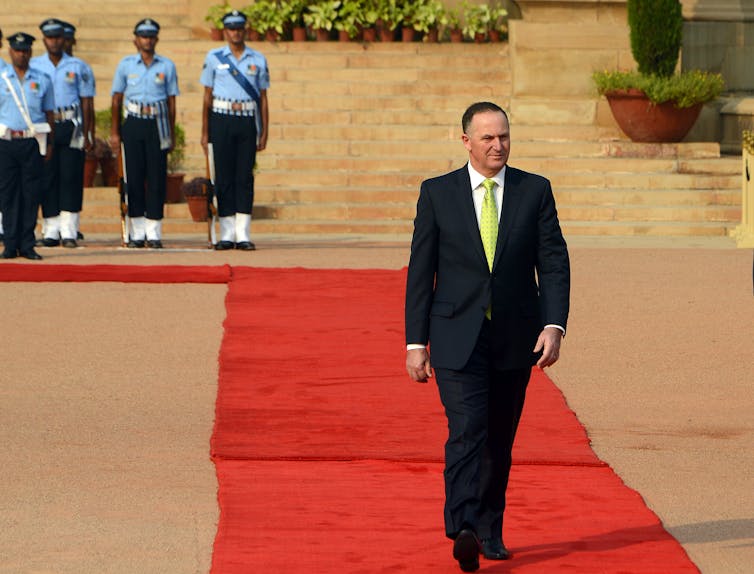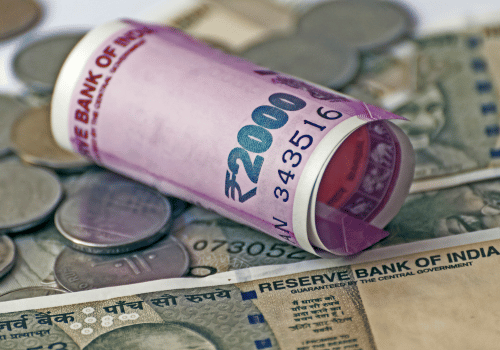India’s economy has emerged as a bright spot in the aftermath of the COVID-19 pandemic. Currently the fifth largest global economy, it is predicted to become the third largest by 2030.
It is expected India will contribute 15.4% to global economic growth this year, second only to China. Prioritising our trade and economic relationship with both countries should be a key goal for New Zealand.
This is already happening with China, where Prime Minister Chris Hipkins has just been leading a trade delegation to Beijing that included a meeting with leader Xi Jinping.
But New Zealand’s economic relationship with India has not received the same sort of attention. The last prime minister to lead a trade delegation to India was John Key in 2016. The free trade agreement (FTA) expected from that visit has still not happened, although Hipkins has promised to visit India at a later date.
As of December 2022, India ranked 16th among New Zealand’s trading partners, accounting for a little over 1% of our total trade. Between 2017 and 2022, trade with India declined by NZ$1 billion – largely due to plummeting international student numbers both before and after COVID, as well as a massive reduction in log exports after New Zealand’s rules for fumigation changed.
And between 2000 and 2023 New Zealand’s long-term investment in India was worth just US$79.02 million. This accounted for 0.01% of India’s total inward foreign direct investment (FDI). Australia by contrast invested US$1.1b in India during the same period, accounting for 0.2% of the FDI inflows.
Considering India’s economic growth over the past few years – and its future potential – New Zealand risks missing out if it doesn’t start to prioritise the relationship.
Prime Minister Chris Hipkins to take up offer to visit India and talk free trade https://t.co/4JpJvXtZ9Q
— RNZ News (@rnz_news) May 22, 2023
Building partnerships
This needs to begin with what is called an “early harvest” framework – an initial agreement that would allow New Zealand and India to identify products suitable for the first wave of tariff liberalisation.
The framework paves the way for a long-term comprehensive economic partnership (CEP), which goes beyond tariff reduction and trade in goods. New Zealand already has a regional comprehensive economic partnership with a number of countries in the Indo-Pacific region.
This type of partnership can reduce the time exporters spend waiting for goods to clear customs, as well as provide greater certainty for service exporters and investors in key areas of mutual economic benefit. A CEP thereby creates opportunities for New Zealand exporters to get their products and services into regional supply chains.
The advantage of a CEP over an FTA is that it includes services, investment, government procurement, mediation of disputes, and other regulatory aspects of trade. An FTA focuses only on goods. A CEP will likely have more appeal for India than a trade deal that focuses solely on tariff reduction.
Increasing connection and diversity
A closer relationship with India would help New Zealand address critical skilled labour shortages. But to achieve this, the two countries would need to establish mutual recognition of qualifications and identify opportunities for training and development across key service sectors.
COVID’s impact on global supply chains and the subsequent production delays highlighted the importance of economic risk diversification for sustaining our long-term growth. Relying heavily on one single trading partner for our economic needs created significant vulnerability during the pandemic.

According to a report from the India New Zealand Business Council, a number of investment opportunities exist for New Zealand in a closer relationship with India. These go beyond agricultural product exports and include forestry, agricultural and financial technology, education, digitisation, traditional medicines and renewable energy.
The advantages of a closer partnership are not lost on on some of New Zealand’s trade groups. Horticulture New Zealand, for example, has already partnered with the northern state of Himachal Pradesh to improve the productivity and yield of the state’s apple production.
Playing catch-up
New Zealand needs to move fast. Australia has already made significant moves to build its economic and cultural relationship with India. In 2022, the two countries signed a Comprehensive Economic Cooperation agreement. And, Deakin University and the University of Wollongong (UOW) are set to open foreign campuses in India.
Other countries are also rapidly taking advantage of India internationalising its education sector under the 2020 New Education Policy. New Zealand universities are nowhere close to such a strong presence in this market.
The ecosystem to make this happen already exists. There is a growing Indian diaspora in New Zealand, as well as a strong engagement of business stakeholders and the diplomatic community from both countries.
The India New Zealand Business Council report outlines specific policy actions for governments and stakeholders to take this important relationship to the next level. So far, however, there has not been the political will to invest seriously in India. Only a change in mindset and perception will change that.
Source: The Conversation
Also read: New trade agreement with India opens opportunities for wine export




















